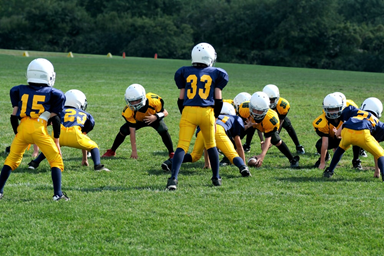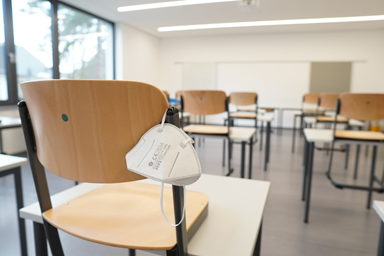Flush with COVID-19 aid, schools steer funding to sports – By Collin Binkley and Ryan J. Foley, The Associated Press
One Wisconsin school district built a new football field. In Iowa, a high school weight room is getting a renovation. Another in Kentucky is replacing two outdoor tracks — all of this funded by the billions of dollars in federal pandemic relief Congress sent to schools this year.
The money is part of a $123 billion infusion intended to help schools reopen and recover from the pandemic. But with few limits on how the funding can be spent, The Associated Press found that some districts have used large portions to cover athletics projects they couldn’t previously afford.
Critics say it violates the intent of the legislation, which was meant to help students catch up on learning after months of remote schooling. But many schools argue the projects support students’ physical and mental health, one of the objectives allowed by the federal government.
Rep. Bobby Scott, the top Democrat on the U.S. House education committee, said the money shouldn’t be used to fund athletics at the expense of academics. It was meant to help students, he said, not sports programs.

Thousands of Florida students still reported 'missing' from school districts – By Katie LaGrone, ABC Action News
Some Florida school districts are reporting thousands of students whose whereabouts remain unknown.
Nearly two years into the pandemic, students who have fallen off the school grid and haven’t shown up in class remain a problem for almost every school district in Florida.
In Polk County, 100 students are still unaccounted for.
In Miami Dade County, the state’s largest school district, the number of missing students was in the thousands last year but has been reduced down to just under 650, according to a district spokesperson.
But in some other large districts, the number of students districts can’t locate remains in the thousands.

Three education research organizations are joining forces to help school systems use data to aid student recovery from pandemic learning disruptions.
NWEA, Harvard University’s Center for Education Policy Research and CALDER, at the American Institutes for Research, will partner with a consortium of districts across the United States to provide timely information about tutoring, after-school programs and other interventions educators hope — but are not sure — will help children regain ground in reading, math and other core subjects.
The goal is to allow educators to pivot quickly when an academic intervention does not work as well as they had hoped, or to double-down on strategies that yield good outcomes.
“School districts have never had so many students so far behind,” Dr. Thomas Kane, faculty director of the Center for Education Policy Research, said in a news release. “As with anything new, it is unlikely that the interventions they have in place now will allow all students to catch up.”

Michigan schools worry about funding loss as student Count Day looms – By Ethan Bakuli and Tracie Mauriello, Chalkbeat
Count Day stands to look different than it did in the spring, as Michigan school district leaders worry they will lose funding for students who are in quarantine.
The state determines funding based largely on the student count. Schools may also add students who attend within a certain period after Count Day if specific requirements are met.
The event is observed twice a year across public schools in Michigan, as districts tally the number of students attending their schools. Wednesday is the first of two count days, one in October, the other in February, for more than 800 Michigan districts and charter schools.
Principals are concerned they will lose funding for students unable to come to school on Count Day because they have COVID, have symptoms, or are in quarantine because they’ve been exposed to the coronavirus. At stake is at least $8,700 per student.












